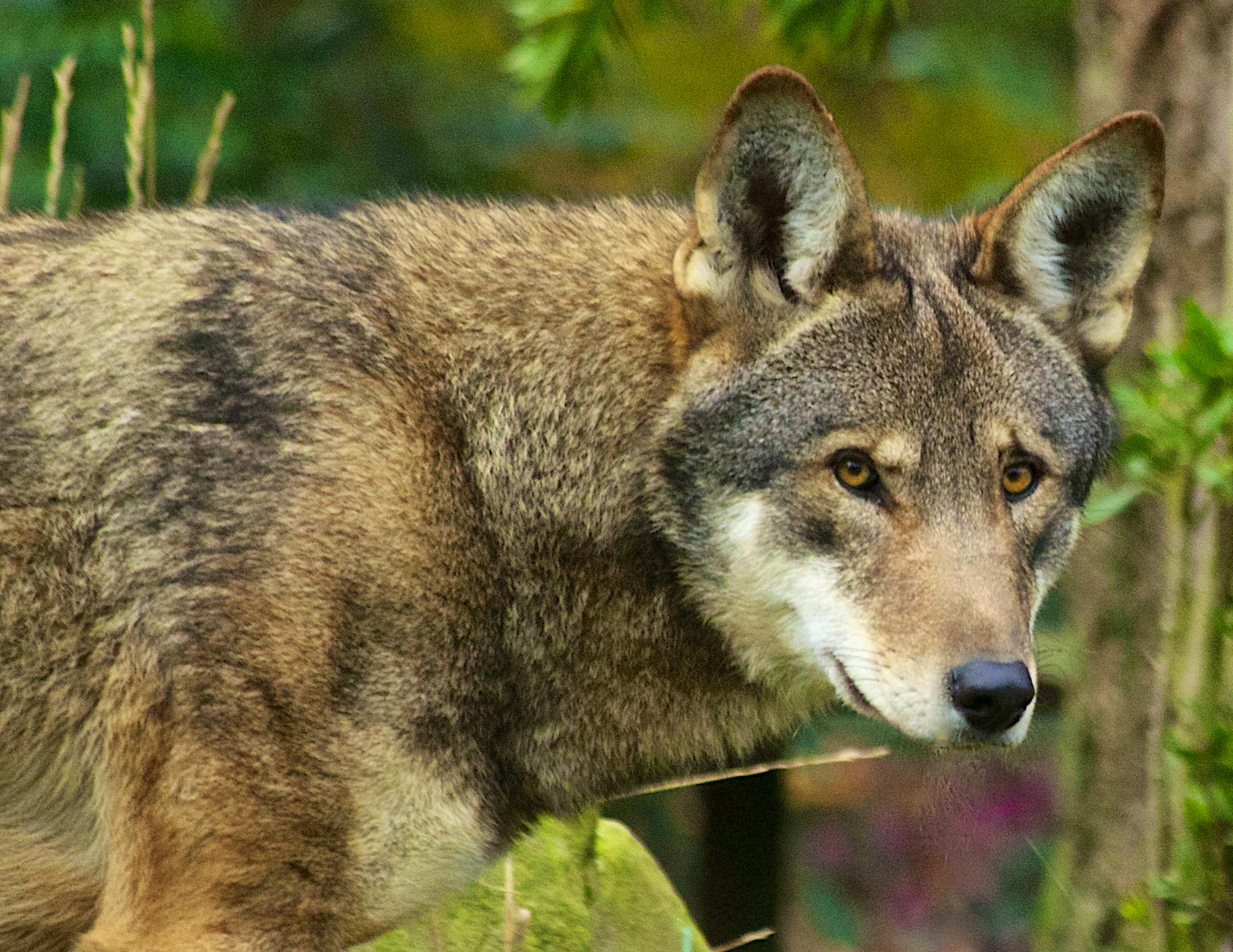I am more hopeful about the future for Red Wolves than I have ever been. Today, September 14, marks 36 years since Red Wolves were reintroduced to the wild. Red Wolves never received the same fanfare as their western gray counterparts, but their recovery story is nonetheless similarly powerful. Over 30 years of knowledge and experience show us what's possible when advocacy and dedication come together to save a species. So, let's start there.
A Howling Past
Red Wolves are essential players in their ecosystems, maintaining critical ecological balance. Unfortunately, they were one of the first species listed under the Endangered Species Act, but within a few years they were declared extinct in the wild by 1980. This jumpstarted a novel program for the U.S. Fish and Wildlife Service (USFWS), who scoured southeast Texas and southwest Louisiana — the last known locations of wild Red Wolves — to capture the remaining Red Wolves and put them into a captive breeding program. The goal was to sustain the species’ genetics, rebuild the population and eventually return Red Wolves to the wild.
During this time, USFWS was gifted a significant acquisition of land in North Carolina that became the Alligator River National Wildlife Refuge: a peninsula within the wolves’ historic range that offered a clearly defined management area and protected habitat for Red Wolves. So, on September 14, 1987, with reintroduction to this refuge in eastern North Carolina, Red Wolves became the first carnivore reintroduced in the U.S. under the Endangered Species Act (ESA). Alligator River National Wildlife Refuge remains the heart of Red Wolf country today and is currently home to the largest pack of Red Wolves in the wild.
This Red Wolf recovery effort was celebrated as a huge success. The population grew steadily and by the early 2000s, it reached a peak of over 100 animals in the wild!
Back On the Brink
About a decade ago, there was a perfect storm that undermined the Red Wolf recovery program. First, many folks who were directly engaged with the recovery effort at USFWS were redistributed, and the presence of federal officials working on the program and collaborating with landowners was reduced. This created a space where mistrust took root and voices of opposition began to emerge.
At this same time, USFWS faced growing threats to Red Wolves as gunshot mortalities for Red Wolves mistaken for coyotes skyrocketed. This was the direct result of a decision by state wildlife agencies to liberalize hunting regulations that allowed for nighttime hunting of coyotes.
As more breeding males and females were mistakenly killed, their packs collapsed and the ability to sustain their populations was severely diminished. This led to increased incidences of hybridization with coyotes impacting the genetic integrity of the population. In response, USFWS stopped reintroducing wolves and pulled back the management efforts desperately needed to prevent the collapse of the wild wolf population. Most concerningly, the agency then posed the question: is recovery even possible? Under the ESA, that is not a question that can be entertained. The law demands a legal and moral obligation to prevent extinction.
Back on Track
In August 2023, Defenders of Wildlife and conservation partners successfully negotiated a settlement to litigation challenging USFWS’s management decisions. As a result, USFWS is now legally committed to progress Red Wolf recovery through 2030. This commitment includes three key elements:
-
Increasing the wild population by releasing Red Wolves currently part of captive breeding programs, including fostering captive born pups in wild dens.
-
Increasing transparency and communication between USFWS and local communities to ensure private landowners and others understand how to coexist with Red Wolves and how to voice concerns and questions.
-
Using proven adaptive management techniques to better handle hybridization with coyotes.
Running Towards a Bright Future
With renewed energy and commitment for Red Wolves, we are poised for progress. This is not the time to step back, it’s the time to come together, step up and do more. And that’s what Defenders does best.
We’ve reached a new beginning for Red Wolf recovery. Heightened public support and renewed engagement with communities will allow us to better leverage nonlethal conflict mitigation tools. And the robust partnerships and collaborative efforts established with the settlement are helping us move towards a culture of coexistence.
For over a decade I’ve had the pleasure of working on Red Wolf conservation. Through it all, I’ve learned it’s important to consistently focus on the vision of recovery. Dedication to this vision allows us to confront challenges and doggedly pursue progress. I am so grateful for all the friends, colleagues and dedicated conservationists who have joined me in this fight and I’m so excited to continue working with them as we run toward a bright future for Red Wolves.











